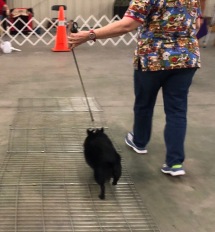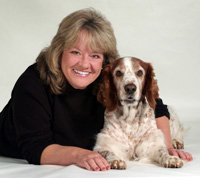
By Mary R. Burch, PhD
While dog trainers in the United States are usually aware of puppy temperament tests (e.g., Volhard’s PAT) and temperament tests for adult dogs including the American Temperament Test Society (ATTS) test and most recently, the AKC Temperament Test (ATT), many trainers are not aware that temperament testing is a widespread international trend.
For trainers who have an interest in canine temperament, a list of tests from multiple countries is below.
Dutch SAB (Socially Acceptable Behavior)
http://vdt.ugent.be/sites/default/files/art76508.pdf
Measures aggression
_________________
Sweden – Behavior & Personality Assessmentt in Dogs (BPH) (Sweden)
Started in 2012 by the Swedish Kennel Club (SKK). The assessment is designed to fit all dogs, regardless of breed. The BPH takes about 30 minutes and consists of 7 parts. The aim is to give a summary of how the dog reacts in and handles various situations.
____________
German Shepherd Dog Club of America Temperament Test
https://www.gsdca.org/88-events/temperament-testing
Test is a modified ATTS test and includes neutral/friendly stranger, reactions to auditory (clattering) and visual stimuli (umbrella), reaction to gunshot, unusual footing and an aggressive stranger.
____________________
UDC Temperament Test (United Doberman Club)
https://www.uniteddobermanclub.com/forms/scoresheets/temperament_test_scoresheet.pdf
______________
Mentalbeskrivning Hund (MH) – Swedish Working Dogs (also in Finland)
Click to access MH%20test%20in%20english.pdf
A canine character test originally developed in Sweden by Svenska Brukshundklubben – Swedish Working dog association. The test is mainly intended for working dogs, such as German Shepherds, Rottweilers, Collies, Boxers etc. But dogs of other breeds can take the MH test as well.
In Finland the test is under the Finnish Kennel Club (SKL) and the Finnish Working Dog Association (SPKL).
______________
Working Aptitude Evaluation (WAE for the WAC) – Dobermans
http://dpca.org/awards/wae/index.php
Developed from the ATTS. (Social attraction, sound (clattering), sight (umbrella), footing, protective response-decoy.
____________
Working Test for Retrievers – Italiano (Italy)
The aim of a Working Test is to select the best dogs having good temperament, good marking, good use of nose and showing initiative.
_________
IPO- formerly called Schutzhund
https://www.germanshepherddog.com/about/schutzhund-training/schutzhund-trials/
________
(Cane Corso breed) – The A(CAL) test
https://www.canecorso.org/getting-started-in-working-events.html
____________
Federacion Canofila Mexicana TT (Mexico)
Click to access ReglamentoTemperamento2016.pdf
__________
C-BARQ (questionnaire)
https://vetapps.vet.upenn.edu/cbarq/
This is a questionnaire.
________

 THE AMERICAN KENNEL CLUB ANNOUNCES AKC TEMPERAMENT TEST
THE AMERICAN KENNEL CLUB ANNOUNCES AKC TEMPERAMENT TEST

 He started his training with CGC, then went on to CGCA (advanced CGC), and after that, he earned titles in Beginner Novice and Novice obedience. If all goes well, Devon has big plans for participating in Rally at the Doberman National in November.
He started his training with CGC, then went on to CGCA (advanced CGC), and after that, he earned titles in Beginner Novice and Novice obedience. If all goes well, Devon has big plans for participating in Rally at the Doberman National in November. Some people have trouble knowing how to work within a structured environment, yet that is what a society is — structured. Whether it is our natural inclination or not, structure is something we must achieve to be part of a productive and healthy community. Working with dogs helps those who are trying to achieve this goal in a fun and positive manner.
Some people have trouble knowing how to work within a structured environment, yet that is what a society is — structured. Whether it is our natural inclination or not, structure is something we must achieve to be part of a productive and healthy community. Working with dogs helps those who are trying to achieve this goal in a fun and positive manner. The dogs all train with their owner, but this does not transfer over to the youth. The youth must develop their own connection and “language” with each dog. Working with the older and previously trained dogs presents a greater challenge. The youth truly must work hard to gain respect and attention from the dog.
The dogs all train with their owner, but this does not transfer over to the youth. The youth must develop their own connection and “language” with each dog. Working with the older and previously trained dogs presents a greater challenge. The youth truly must work hard to gain respect and attention from the dog. A crate is the safest place for a dog to be when riding in a car. You can also use a canine seatbelt. Owners of well-trained dogs will often allow them to ride unrestrained in a back seat. Whatever you do, don’t have a loose dog riding in the front seat of your car.
A crate is the safest place for a dog to be when riding in a car. You can also use a canine seatbelt. Owners of well-trained dogs will often allow them to ride unrestrained in a back seat. Whatever you do, don’t have a loose dog riding in the front seat of your car. They didn’t stop there…after Beginner Novice, Devon earned the CGCA (AKC Community Canine) title and in November 2015, he got his CD (Companion Dog, the novice title) in obedience.
They didn’t stop there…after Beginner Novice, Devon earned the CGCA (AKC Community Canine) title and in November 2015, he got his CD (Companion Dog, the novice title) in obedience.

 AKC's Canine Good Citizen and S.T.A.R. Puppy Director, Certified Applied Animal Behaviorist
AKC's Canine Good Citizen and S.T.A.R. Puppy Director, Certified Applied Animal Behaviorist



